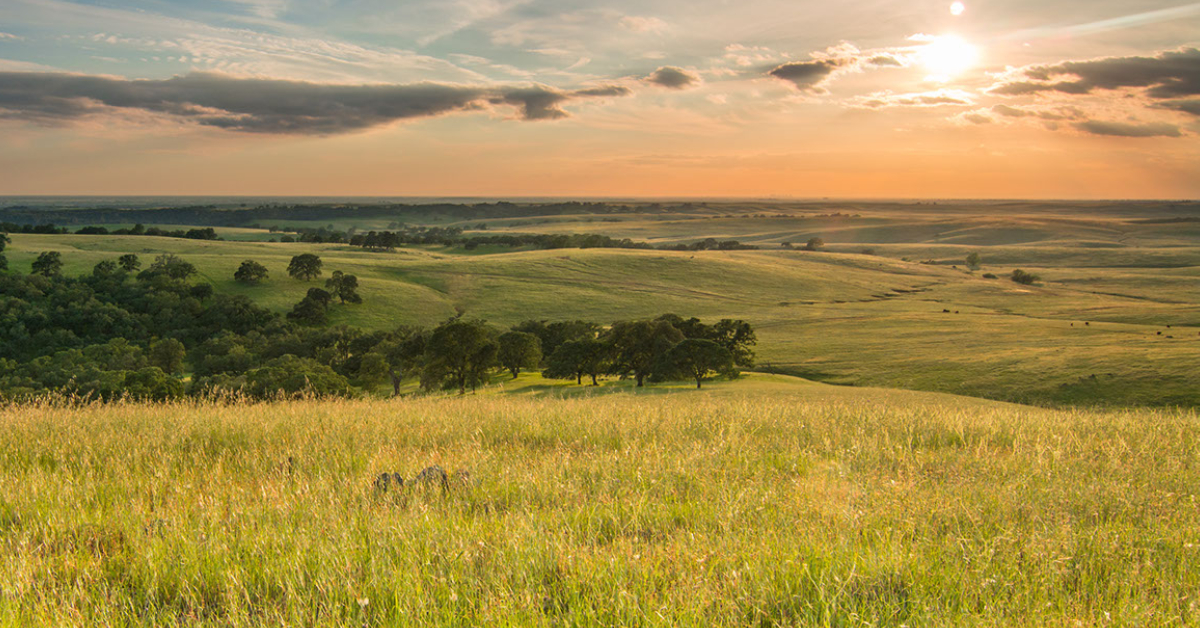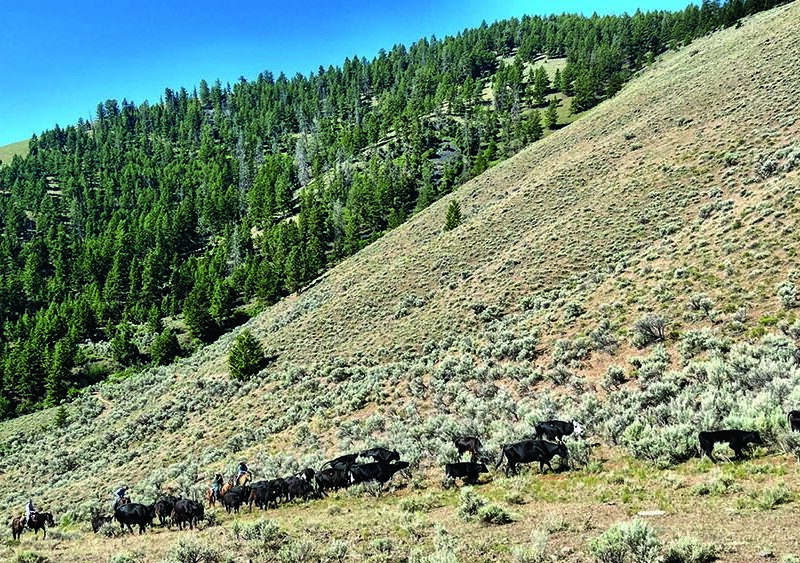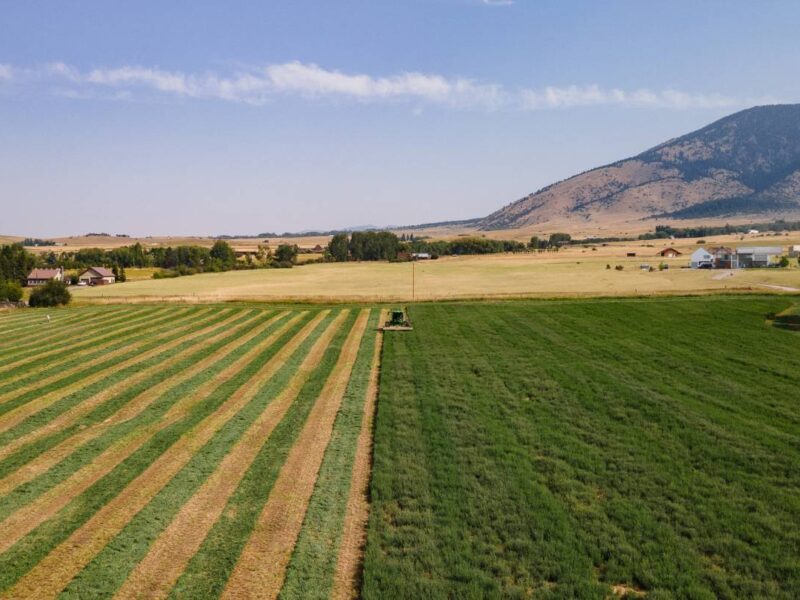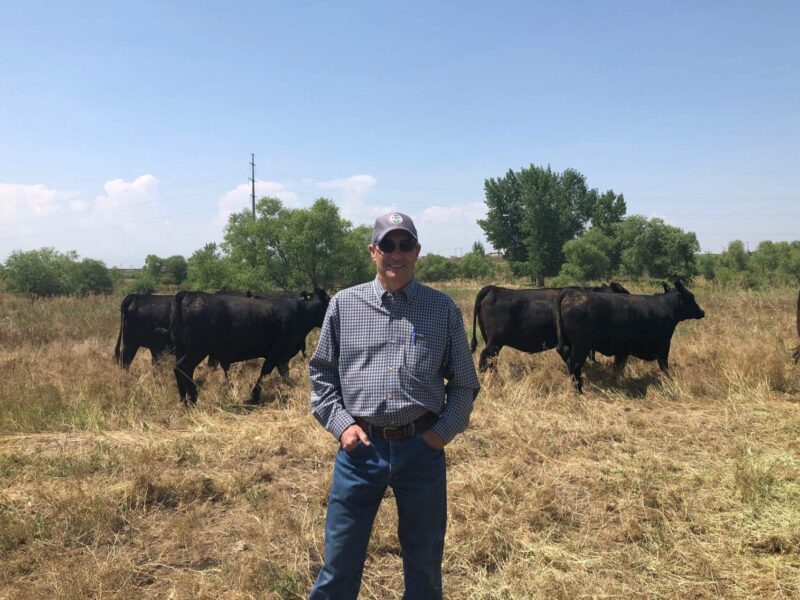The Grassland Conservation Reserve Program (Grassland CRP) has undergone some major changes since the passage of the 2018 Farm Bill that increase its applicability to owners of western rangeland. In particular, ranking criteria were expanded such that risk of development and existing wildlife habitat are ranked on par with risk of conversion to cropland. Additionally, recent changes to the program raised minimum rental rates for Grassland CRP contracts at $15/acre nationwide, increasing the average rental rate in some areas of the Southwest, for instance, by more than 10 times. If you have dismissed Grassland CRP as not for you before, signup 203 is time to give it another look.
WLA’s stewardship coordinator Bre Owens spoke with staff at USDA’s Farm Service Agency (FSA) to get plain language answers to the key questions western landowners have about Grassland CRP. Text in brackets has been added by Bre to provide clarity or advice.
How is Grassland CRP different from CRP? What are the agencies’ goals for the program?
The purpose of the Grassland CRP program is to keep grasslands intact. Much of our nation’s grassland has been converted to development or cropland, and much more remains at risk. Many species of wildlife utilize our grassland for food and critical habitat and safe corridors for migration. Grassland CRP is different from regular CRP because it is a working lands program. Participants are permitted to hay and/or graze and operate the grassland while following an approved conservation plan. In contrast, General and Continuous CRP limit these activities. Limits to these activities for Grassland CRP are only restrictions during primary nesting season and restrictions set forth in the conservation plan. [The primary nesting season dates should align with local conditions and be determined on a site-specific basis.]
What land uses does Grassland CRP cover? Would rangeland, shrub steppe or oak woodland (CA blue oak savannah/woodland for example) be eligible ecological types?
Rangeland is an eligible ecological type. Woodland is not an eligible ecological type. Additionally, grassland with greater than 5 percent tree canopy is not eligible. Savannah type ecological sites are eligible if the tree canopy is less than 5 percent.
Is there a minimum or maximum acreage that must be included in an application?
No, there is no minimum or maximum number of acres that can be offered. However, participants who wish to qualify for the small-scale livestock operation and receive additional points are limited to 200 acres and 140 animal units per farm. [While there is no acreage cap, there is a total per year payment cap of $50,000 per landowner, which creates a functional acreage cap of approximately 3,333 acres for contracts at the minimum rental rate.]
What management actions are allowable with a Grassland CRP contract?
Common grazing practices, including maintenance and necessary cultural practices, in a manner that is consistent with maintaining the viability of grassland, forb and shrub species appropriate to the locality and other activities, when the manner, number, intensity, location, operation and other features associated with such activity will not adversely affect the grassland resources or related conservation values protected under the CRP contract.
What restrictions does Grassland CRP place on the enrolled acreage?
The restrictions are that the enrolled acres be maintained according to a conservation plan and protected from conversion. That means that the participant is responsible for following an approved conservation plan (including maintaining the health and vigor of the stand and keeping the land free of invasive species) and keeping the land from being converted to cropland or development. The participant is required to follow these restrictions for the life of the contract. There are also some restrictions with respect to the primary nesting season for grassland bird species (typically between March 15 to July 15, depending on elevation). For example, there may be restrictions on haying during the primary nesting season. Other additional restrictions with respect to the primary nesting season may be applicable as these differ from state to state.
For haying or grazing, are there seasonal allowances or restrictions on those activities that landowners should keep in mind when considering an acreage offer?
Any seasonal restrictions would be related to those within the primary nesting season or those included in the conservation plan.
What options exist in terms of length of contract? And how are payment rates determined?
The participant can choose a 10- or 15-year contract. Participants who choose a 15-year contract will receive an additional 5 points in the ranking process. Annual rental rates per acre are determined using 75 percent of the cash rent data for pasture from National Agricultural Statistics Service data. Annual rental rates for grassland are per county. New in signup 203 there is an additional 5 percent Climate smart incentive rate already added into the annual rental rate. The new minimum annual rental rate for Grassland CRP in signup 203 is $15 per acre.
Can landowners install conservation practices through EQIP or perform enhancements through CSP on Grassland CRP acreage? Or conduct both through the new EQIP CIC opportunity?
Land under contract for EQIP or CSP or EQIP CIC is not eligible for Grassland CRP.
If a landowner is conducting planting on Grassland CRP acreage, either herbaceous or shrub species, are improved plant varieties allowed in addition to native species?
A participant can enhance the stand of grass as long as the current stand of grass is maintained. However, the additional enhancements will not provide the participant with additional points and cost share is not available to the participant.
Does a Grassland CRP contract change a landowners’ eligibility for drought programs offered through FSA or NRCS?
Participants may be eligible for disaster assistance programs as long as there is no duplication of benefits. Participants will need to work with their local FSA office to determine eligibility for specific drought programs.
How much funding has been dedicated to Grassland CRP new enrollments for 2021?
There is no specific funding dedicated specifically to the Grassland CRP program, other than the 24 million acre total CRP cap set by statute. [USDA reserves roughly 2 million CRP acres per year for Grassland enrollments.]
Are there geographic or other priority areas for 2021 that affect application ranking? How were these determined?
There are both National and State Priority areas set for Grassland CRP. State priority areas are set by the states and then approved by the State Technical Committee and State FSA Committee. [FSA offices should be able to tell you if you are in a state priority area. If they can’t, please reach out to WLA and we will assist you.] There are two national priority areas (see map below) for signup 203 which are targeting environmentally sensitive areas as determined by the USDA’s deputy administrator for farm programs.
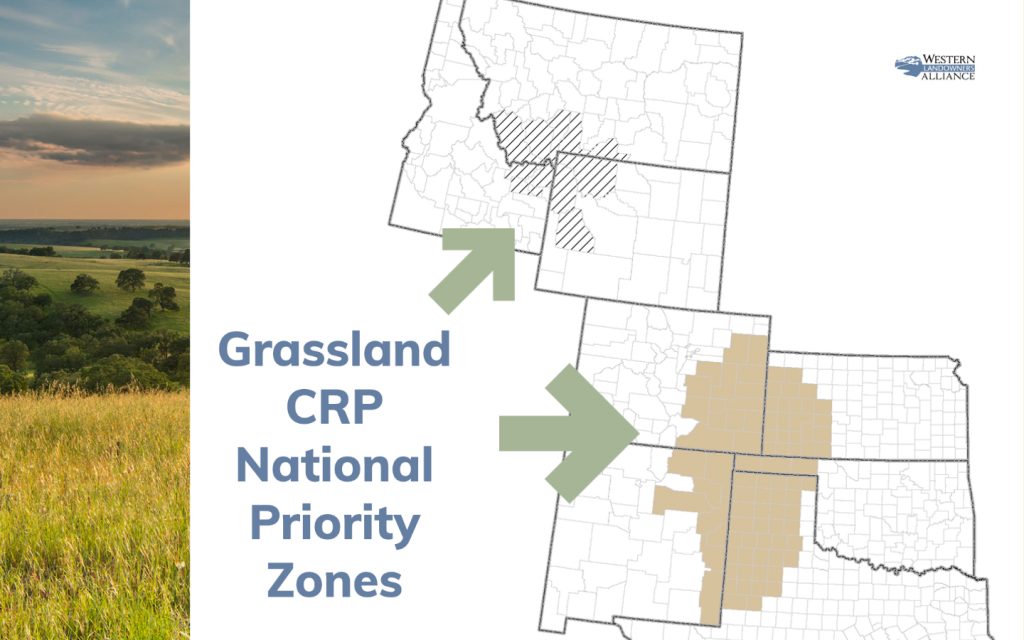
What are some of the other factors considered in ranking of applications?
There are seven factors included in the ranking process.
F1 – current and future use of the offer,
F2 – beginning farmer/rancher, veteran, or underserved producer,
F3 – maximizing grassland preservation,
F4 – vegetative cover,
F5- environmental factors,
F6 – small scale livestock operations, and
F7 – cost.
The Grassland CRP Signup 203 Ranking Factors are available on the CRP webpage. It contains a description of all the ranking factors and subfactors.
Is there a minimum ranking score that an offer must reach to be eligible?
The minimum ranking score for an offer to be accepted will be set after the deadline for accepting offers by the Secretary of Agriculture and then announced publicly.
What are some other factors landowners should consider if submitting an application?
Cost share for livestock water development and cross fencing may be eligible for payment in addition to rental payments where there is a grazing distribution resource concern as determined by NRCS or the Technical Service Provider.
Key points to consider about Grassland CRP
- Land under contract for EQIP or CSP or EQIP CIC is not eligible for Grassland CRP. Cost share for livestock water development and cross fencing may be eligible where there is a grazing distribution resource concern as determined by NRCS or the Technical Service Provider.
- Grassland CRP enrollment does not preclude a landowner’s access to drought or other disaster assistance programs. Participants may be eligible as long as there is no duplication of benefits and other criteria are met.
- A landowner may submit a program offer for a portion of land acreage under ownership. Offers do not need to include the entire owned land base.
- There is a $50,000 per year payment limitation under the program.
- An AGI cap waiver can be requested based on a land offering that includes “environmentally sensitive land of special significance”. This may include lands within National Priority Zones or State Wildlife Priority Zones, among others.
- A conservation plan developed based on NRCS standards and specifications is required for lands enrolled, which may be developed by NRCS or a Technical Service Provider. The plan will identify practices for maintaining the health and vigor of the grassland and keeping the land free of invasive species.
- Depending on state-level criteria, a conservation plan may include restrictions to timing of haying or grazing activities or to level of use under certain conditions. Landowners should consult with FSA and NRCS to determine what management restrictions exist in their state or region.


